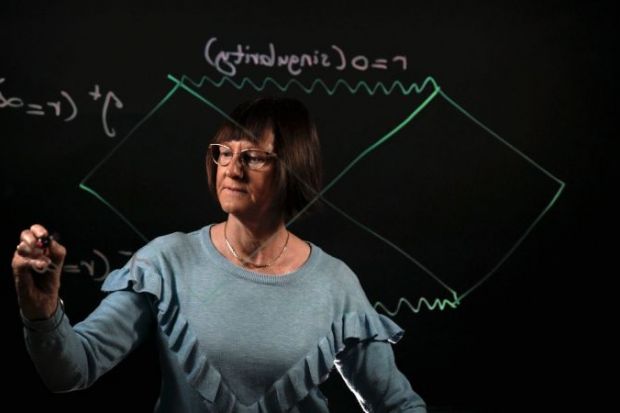In the latest endorsement of big science, four of Australia’s old guard of astrophysics have shared the country’s top research award for their role in one of the breakthroughs of the century.
David McClelland and Susan Scott of the Australian National University (ANU), the University of Western Australia’s David Blair and University of Adelaide’s Peter Veitch have received the 2020 Prime Minister’s Prize for Science, for contributing to the first observation of gravitational waves.
The quartet had spent almost two decades collaborating with the Laser Interferometer Gravitational-wave Observatory (LIGO) – one of the world’s biggest and most sensitive scientific instruments – before its 2015 detection of space-time ripples.
These phenomena had been described 99 years earlier by Albert Einstein, who doubted the waves’ infinitesimally faint footprints could ever be detected. When they finally were – the result of a collision of black holes 1.3 billion years ago, which released 10 octillion times the energy contained in the world’s nuclear arsenal – the signals that reached Earth were strong enough to shift test mirrors in the interferometers by a thousand billionth the width of a human hair.
The detection won three American LIGO founders the Nobel Prize in Physics two years later. The Nobel Foundation statutes limit awards to three recipients, but co-winner Rainer Weiss said the prize was recognition for decades of effort by about 1,000 people.
They included a 56-strong Australian contingent from six universities and science agency the CSIRO. The four recipients of the Prime Minister’s Prize helped refine the instrument’s mirrors, laser beams, sensors and data analysis techniques. Professor Weiss described them as “the central intellectual leadership” of gravitational wave research in Australia.
ANU astronomer Ken Freeman, who nominated the quartet for the prize, said the discovery would not have been possible without their contribution: “Much of modern big science, like gravitational wave research, must be done in very large international teams often with hundreds or more of collaborators.”
Professor Blair said the prize was a “fitting tribute to all of the students and scientists who participated in this amazing quest”, likening the achievement to the 19th-century invention of the radio. “We succeeded in making the first gravity radio. Before then, humanity was deaf to the sounds of the universe.”
University of Sydney chemist Thomas Maschmeyer has claimed the Prime Minister’s Prize for Innovation, for translating his research into two pioneering sustainability technologies that have generated about 90 jobs.
His catalytic hydrothermal reactor (Cat-HTRTM) enables the transformation of residues and wastes – such as used plastic, shredded tyres and paper by-products – into synthetic oil that can be used to produce fuels and chemicals.
Professor Maschmeyer’s zinc-bromine gel battery design allows for low-cost, high-efficiency energy storage, particularly in hot and remote areas. Spinout company Gelion Technologies’ first commercial installation was the batteries powering six “off-grid smart benches” at Sydney’s main campus. They provide night-time lighting from energy generated via the benches’ photovoltaic solar roofs, which double as shelter.
Professor Maschmeyer said that by “indulging my deep passion for gaining an understanding of our environment”, he was helping to protect it. “There is a real thrill in trying to make sense of nature and unearthing a few of its secrets along the way.”
Prizes have also gone to UNSW Sydney renewable energy engineer Xiaojing Hao, Flinders University organic chemist Justin Chalker and Melbourne haematologist Mark Dawson.






